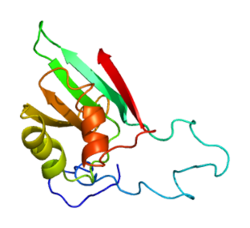| EIF1 | |||||||||||||||||||||||||||||||||||||||||||||||||||
|---|---|---|---|---|---|---|---|---|---|---|---|---|---|---|---|---|---|---|---|---|---|---|---|---|---|---|---|---|---|---|---|---|---|---|---|---|---|---|---|---|---|---|---|---|---|---|---|---|---|---|---|
 | |||||||||||||||||||||||||||||||||||||||||||||||||||
| |||||||||||||||||||||||||||||||||||||||||||||||||||
| Identifiers | |||||||||||||||||||||||||||||||||||||||||||||||||||
| Aliases | EIF1 , A121, EIF-1, ISO1, SUI1, eukaryotic translation initiation factor 1, Eukaryotic initiation factor 1 | ||||||||||||||||||||||||||||||||||||||||||||||||||
| External IDs | MGI: 105125; HomoloGene: 130538; GeneCards: EIF1; OMA:EIF1 - orthologs | ||||||||||||||||||||||||||||||||||||||||||||||||||
| |||||||||||||||||||||||||||||||||||||||||||||||||||
| |||||||||||||||||||||||||||||||||||||||||||||||||||
| |||||||||||||||||||||||||||||||||||||||||||||||||||
| |||||||||||||||||||||||||||||||||||||||||||||||||||
| |||||||||||||||||||||||||||||||||||||||||||||||||||
| Wikidata | |||||||||||||||||||||||||||||||||||||||||||||||||||
| |||||||||||||||||||||||||||||||||||||||||||||||||||
Eukaryotic translation initiation factor 1 (eIF1) is a protein that in humans is encoded by the EIF1 gene. It is related to yeast SUI1. [5] [6] [7]
Contents
eIF1 interacts with the eukaryotic small (40S) ribosomal subunit and eIF3, and is a component of the 43S preinitiation complex (PIC). [8] eIF1 and eIF1A bind cooperatively to the 40S to stabilize an "open" conformation of the preinitiation complex (PIC) during eukaryotic translation initiation. [8] eIF1 binds to a region near the ribosomal P-site in the 40S subunit and functions in a manner similar to the structurally related bacterial counterpart IF3. [9]




